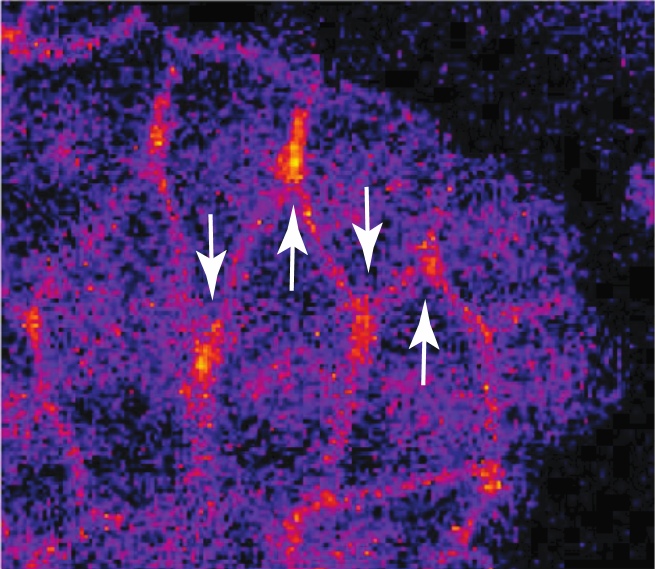Protein points cells in the right direction for migrations in developing tissues

The stretching and growth of skin tissue during embryonic development in animals requires a novel signaling pathway involving CDC-42 GTPase to direct the movement of cells during migrations, report Elise Walck-Shannon and Jeff Hardin of the University of Wisconsin, Madison and colleagues, in a study published November 18 in PLOS Genetics.
Tissues in the embryo change shape through a process called intercalation. One special form of intercalation allows cells in a sheet of tissue to wedge between their neighbors, narrowing the tissue from side to side while at the same time elongating it front to back. In this study, the authors investigate the role of a protein called CDC-42 GTPase in intercalation, using skin tissue from the model roundworm, C. elegans. This protein is known to help cells determine their front from the back or up from down - in other words, their polarity. Scientists have had difficulty studying CDC-42 in embryos because disrupting its functions can interfere with its vital role in very early stages of development. To cope with this limitation, the researchers devised a means of expressing forms of CDC-42 that are always active or that negatively dominate other forms of CDC-42, but only in skin cells and only at elevated temperatures. They show that CDC-42 is involved in both the formation and orientation of cell tips during cell rearrangement. The researchers also identified additional proteins that function in this pathway to cause intercalation.
Jeff Hardin, senior author of this work, comments, "The orderly choreography that these rearranging cells engage in is really quite remarkable, but until now we've been unable to study it in detail. We are excited to study the earlier events that lead these cells to become polarized, and the subsequent steps that allow them to carry out this amazing cellular dance."
These results demonstrate the importance of CDC-42 as a key regulator that determines polarity and guides cells in the right direction during cell migration. Additionally, the study identifies a novel pathway that regulates a ubiquitous process that occurs during animal development and organ formation and involves proteins conserved from worms to humans.
More information: Walck-Shannon E, Lucas B, Chin-Sang I, Reiner D, Kumfer K, Cochran H, et al. (2016) CDC-42 Orients Cell Migration during Epithelial Intercalation in the Caenorhabditis elegans Epidermis. PLoS Genet 12(11): e1006415. DOI: 10.1371/journal.pgen.1006415
Journal information: PLoS Genetics
Provided by Public Library of Science




















